Here at Pinkbike, we get inundated with all kinds of questions, ranging from the basic "Can I have stickers" to more in-depth, soul-searching types of queries like if you should pop the question or what to name your first child. Ask Pinkbike is an occasional column where we'll be hand-picking and answering questions that have been keeping readers up at night, although we'll likely steer clear of those last two and keep it more tech oriented.
Tire sagQuestion: PDXooo asks:
I've noticed that when people ride with low tire pressures there's a noticeable amount of "tire sag". Won't such sagging cause a wheel to be\feel smaller than its actual size? In other words, isn't using lower tire pressures effectively reducing the overall diameter of a wheel? Honestly, I feel as if MTB riders are encouraged to use 29 wheels to counteract the loss in effective wheel diameter due to running the encouraged lower tire pressures!
I've noticed that when I sit on my bike, my tire profile at the contact patch is essentially flat - does this fact not make the profile of a tire, weather round due to a small inner rim width or flat\square due to a wide inner rim width......irrelevant? | It's great to see you're thinking about the tire in suspension terms like sag. Sag is the amount the tire (or suspension) deforms vertically under rider weight. Stiffness is the ratio of the deformation to the force applied, so sag is a good measure of the stiffness relative to the weight of the rider, and the stiffness defines how easily the tire/suspension will be able to absorb bumps,
A mountain bike tire sags by somewhere in the region of 15mm when set at an appropriate pressure. The outer radius of a 29x2.5" tire is about 375mm, so this sag reduces the effective radius by around 3.9%. For one thing, this reduces your effective gearing by 3.9% compared to an infinitely stiff tire, so this needs to be taken account if you wanted to calculate your gear inches very precisely. But a 27.5" wheel is about 5% smaller than a 29" wheel, so any reasonable variation in tire sag is not going to overcome this difference.
Furthermore, more tire sag makes the ride smoother over rough terrain (despite the smaller effective wheel radius) by reducing the tire stiffness and allowing it to deform more easily over bumps, so it definitely wouldn't be a good idea to reduce tire sag in a 27.5" wheel to make it feel more like a 29er. I actually did a test years go comparing 3" tires on a 27.5" wheel to 2.3" tires on a 29" wheel, such that the overall wheel diameters were almost the same. The 3" tires were dramatically smoother and offered more grip and less harshness on rough, rooty or loose trails. They actually rolled faster too on bumpy ground, though they were slower on tarmac. On a vaguely related note, this article found that four different sizes of the same road bike tire had near-identical roiling resistance when setup with the same amount of tire sag, showing that it's an important metric for rolling resistance too.
As for the second part of the question, you're correct that at the contact patch, when using any reasonably low pressure, almost the whole width of the tread pattern is pressed flat against the ground. This is worth remembering when you see some tire reviews talking about an unpredictable loss of grip as the tire transitions from the center tread to the shoulder tread when leaning into a corner - unless you're running very high pressures, the shoulder tread is in contact with the ground the whole time.
However, that doesn't make tire profile and tread wrap (how far round the sidewalls the tread goes) irrelevant. More tread wrap (a rounder tire) means the shoulder tread can grip better and more predictably at very high lean angles (this could help explain why some pro riders are still using 25mm rims); on the other hand, a squarer tire profile will create a wider contact patch, where more of the shoulder tread is in contact with the ground at lower lean angles, which may mean more grip when the bike is closer to upright. This explains why tires designed for low grip-conditions are squarer than dry-weather tires, which are designed to excel at higher lean angles. Motorcycle tires have a very round cross section to cope with lean angles as high as 45-degrees. |
Negative volume spacers for a light rider?Question: Becka asks:
I'm not using anywhere close to all the travel on the rear of my 2015 Canyon Spectral even with 35% sag and no volume spacers. If I run more than 35% the climbing becomes terrible. The rear feels too harsh and I'm getting bounced around on rough descents. I weigh 56kg and I have a RockShox Monarch shock with no volume spacers. I've heard that a damper re-valve could help but I will be buying a new bike soon so I don't want to pay out for a special super-light shock tune. | That's a pretty common problem because most bikes have the same damping tune for all frame sizes. Since you're at the lighter end of the spectrum, the shock/bike isn't perfectly engineered for you. The ideal solution might be to get a lighter compression valving tune, but that's not cheap and if you're planning to sell the bike soon it might not be worth it.
I have a cheaper suggestion. In your situation it's definitely appropriate to remove all the volume spacers from the positive chamber (as you have already done), but you could also try adding spacers to the negative chamber. This will make the suspension a bit stiffer in the start of the travel (which isn't ideal), but it will make the spring softer later in the travel without increasing the sag. This will make it more forgiving on bigger hits while also helping the bike sit higher in its travel when climbing.
When you remove the air can sleeve from the Monarch shock, you'll see it has two spaces for volume bands: one above the step in the middle and one below. Adding bands to the top of the chamber (positive side) will make it firmer towards the end of the travel, but adding them to the bottom (negative) part will make it firmer in the beginning of the travel. Normally that wouldn't be something I'd recommend, but in your situation it should help open up more travel without increasing sag. It's not a perfect solution, but if you have some bands lying around it's free to try, easy to do and easily reversible. |
How to make frame bearings last longer?Question: Adam asks via Instagram:
My Whyte S-150 likes to eat pivot bearings and it's getting hungrier. Even with fancy bearings there's slack in the main pivot after a month or so. Your thoughts please? | My first piece of advice would be to buy decent bearings, as you have done - cheap ones are a false economy and result in the headache of changing them out more often.
A month is really poor innings for a set of decent bearings though. I'd first check you've done the pivot bolts up to the correct torque (you may need to ask the manufacturer what this is). Also, make sure you haven't lost any of the fiddly little washers which sit next to the bearings and provide the correct spacing (this is easily done!)
Assuming you've done that, you could try packing the bearings with grease. The bearing manufacturer doesn't know these bearings will be used in a frame, where they'll only ever rotate back and forth by a few degrees, while potentially being exposed to high loads and water/dirt ingress. They're designed to be able to cope with high RPM and millions of revolutions in their lifetime, while keeping running friction to a minimum. This is appropriate for a hub bearing, for example, but not so much with pivot bearings.
According to an engineering friend who knows a lot more about bearings than I do, even good quality bearings don't have enough grease for the pivot bearing application. So he suggests carefully picking one of the rubber seals off with a sharp pick or Stanley blade, packing the bearing full with waterproof grease, then replace the seal. This may damage the seal, so if you do this with new bearings before installing them, put the damaged side facing inwards. Another tip is to use some anti-fretting compound on the outside of the bearing to make removing them easier later on, and also to hold the spacers in place while putting the frame back together.
Other than that just be careful when washing your bike. Don't jet wash the pivots or use too much detergent near them and if, possible, dry your bike off afterwards by giving it a shake or even a towel down before putting it away. I hope that helps. |
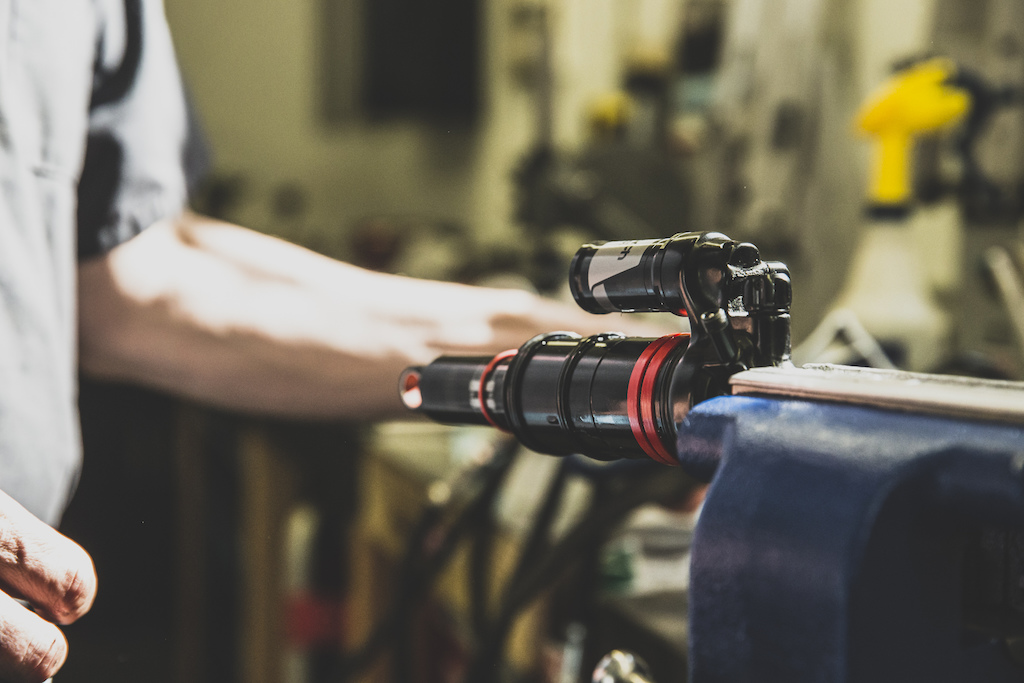
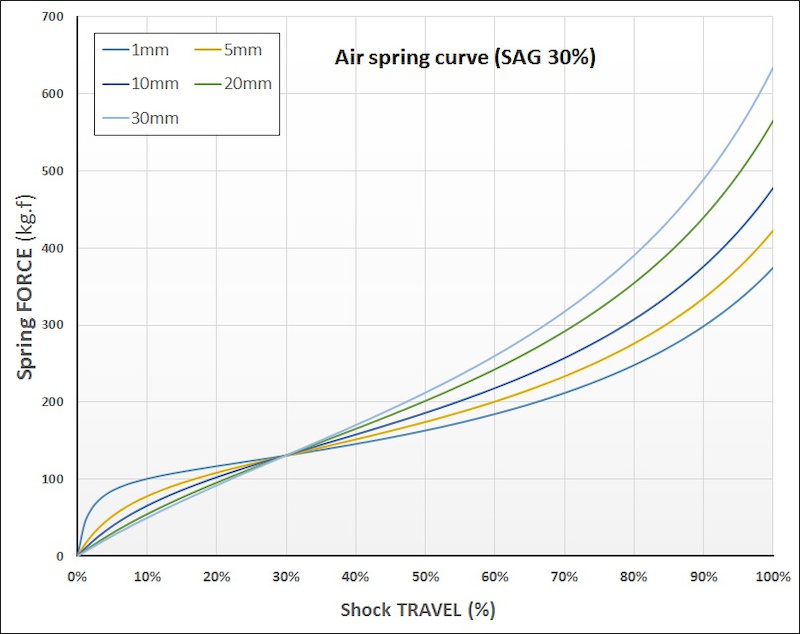


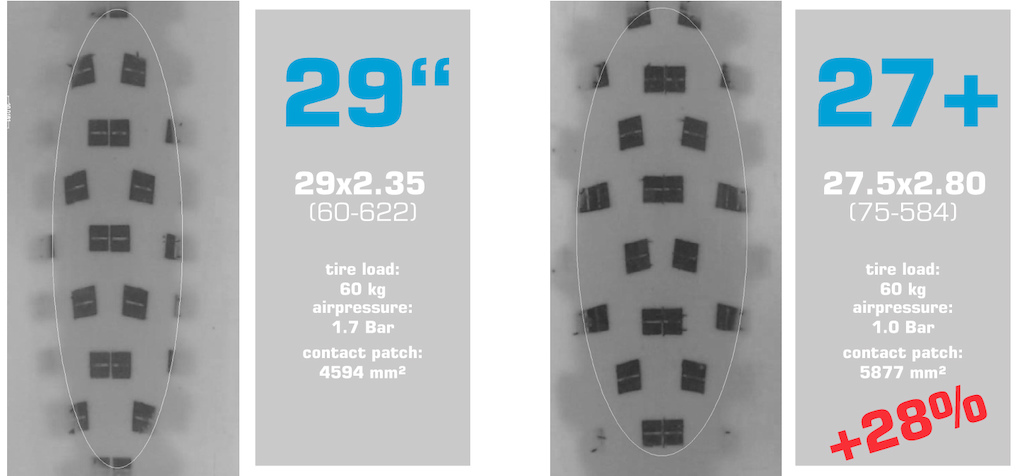
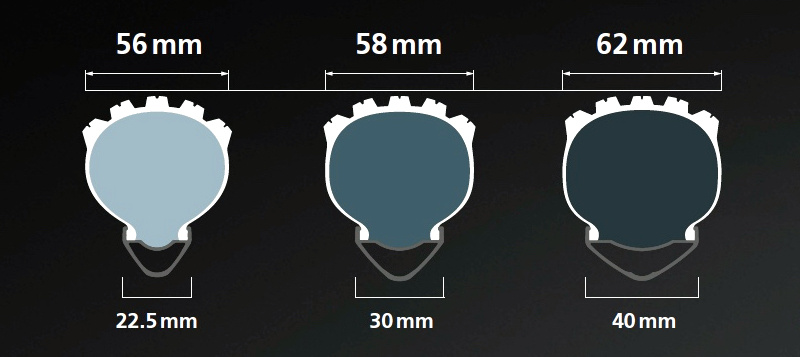
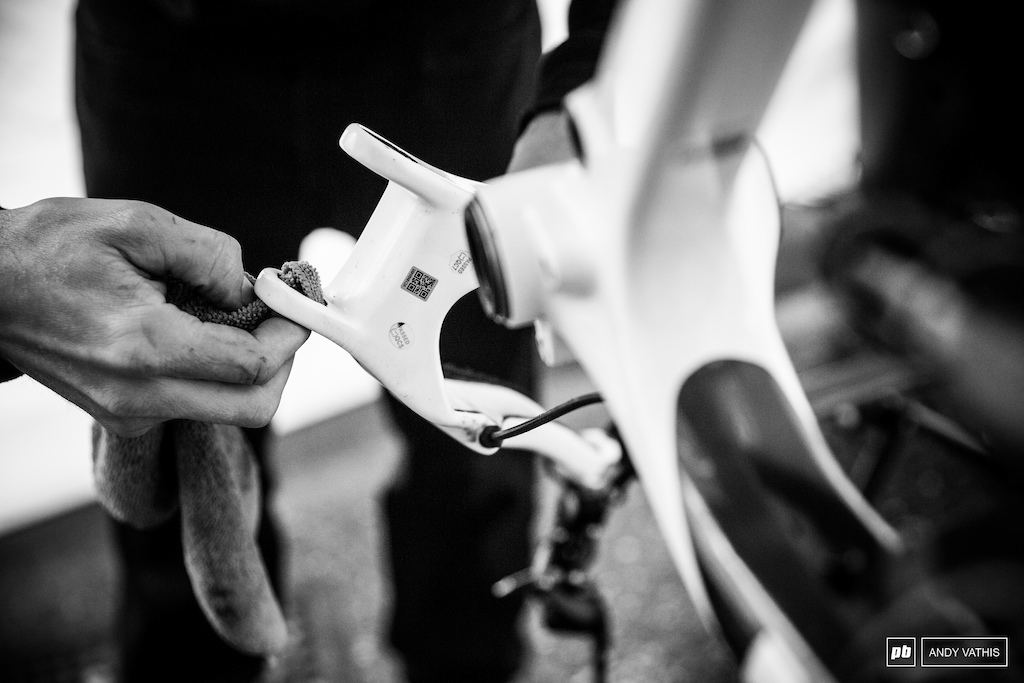

Long story short, the quickest way to have bearings start going is to brush the dirt off when dry. What I saw was the dirt would pile in around the bearings at a much quicker rate than spraying it with water (garden hose.) Washing it with water resulted in less dirt around the pivots and they lasted longer.
I also tried another test where I had excess grease on the face of the bearings on one side of the bike, and the other side of the bike did not. While the side with the grease collected dirt, the bearings did fine. On the other side, dirt worked their way into the bearings.
274 was recommended by Schaeffers when I called them about it 5 or 8 years ago
www.sram.com/globalassets/document-hierarchy/service-manuals/rockshox/rockshox-suspension-theory-guide-rev-c.pdf
For example, let's say you wanted to compare a Fox 34 and a Fox 36 air spring, both at 160mm travel. If they both have the same length of positive and negative chambers they will have the same spring curve (albeit at different pressures), but if they had the same volumes, the 36 would be more progressive.
Also, what's wrong with an Excel plot - it does the job, right?
If you have Knipex pliers, or some other kind of smooth, parallel-jaw vise/plier, put the seal in between the jaws and give it a *gentle* squeeze and they'll straighten right out.
Isn't recommended pressure a function of width (or more specifically, cross-sectional area) and not diameter?
No, lower pressure tires have a bigger patch. Wider (taller really) tires and stiffer sidewalls allow less pressure while keeping the rim safe good rims hold onto the bead also allowing less pressure, and that's what actually makes the contact patch bigger. If those tires pictured had the same pressure, the contact area would be very close if not identical.
Rider weight sets pressure requirements
Rider style sets volume spacers requirements
I think the common assumption that bigger riders need more tokens is false.
I'm 100 kg and I've bent 8mm titanium shock mounting bolts without a hugely noticable bottom out, hate to think what the shock insides would have gone through if it wasn't stuffed full of volume spacers.
With them. Not straight frames and weak ones will flex and eat bearings.
Great stuff here, it’s a keeper.
And let's not even think about mullets, eh?
The "industry" didn't convince us to run low pressures, we just run pressures that get us the most compliance and traction without flatting. Sometimes you get it wrong, burp, and trash a rim. The alternative is horrible ride quality, traction, and rolling resistance at high pressures. Sounds like you choose going slow on rock hard tires. The rest of us choose comfort, traction, and speed. If I want to slowly pick through stuff on hard tires and get my teeth rattled out I'll take my cyclocross bike (sometimes I do).
Calling people brainwashed for making a totally reasonable bike setup decision doesn't really help anyone, fwiw.
"#RideSmootherTrails"
Uhhhhh.... no thanks. Maybe try road biking? You can pump those tires up to like 120psi.
How is it that the mountain bike industry has brainwashed us into riding so fast? #ImInsane #ImSlow #Roadbikes
No it doesn't. The gear inches is circumference, tire sag doesn't reduce the circumference. The tire is still the same size.
Picture the maximum sag, when the rim is actually touching the casing under the tread. If they stay in contact and don’t slide relative to each other (which means they have the same rotational velocity) only the fraction of the tread casing circumference that is equal to the rim circumference can be rotated in one revolution.
Thus, in a sagged tire the casing must be constantly generating a torque on the rim to keep the axle moving forward at the same rate as it would with a rigid tire. To do otherwise would violate the continuity condition of the tire not slipping on the rim or would require a wrinkling of the tire under the contact patch.
Holy crap. This is why when you ride a dead-flat tire it squeaks like crazy. The rim-bead needs to slide against the tread casing.
Aaaaaaand now I need to go measure this in a series of weighted roll-out tests.
This does beg the question of how the tire deforms and slips against the ground to make this happen. I now suspect is has to do with the original question that considered the contact patch of a sagged tire: the casing circumference under the center tread is larger than that under the side knobs, yet if the full width of the tread is in contact with the ground, it can't be in rigid contact with the ground at all points. Maybe the point is moot with knobs that flex, but I'm intrigued.
Think of an oval chain ring. It has the same circumference regardless of where you are in the pedal stroke, but the point where the chain meets the chainring is moving closer / further away from the spindle as it rotates. Going by circumference, a 32t oval chainring would behave the same as a 32t circular one, but it obviously isn't the same IRL. The distance from the spindle to where the chain meets the chainring is what matters for leverage. Same goes for tires (distance from contact patch to axle center).
For anyone who wants to get in to the physics of tire sag and what’s happening in the contact patch, check out chapter 3 “Tire dynamics” of _Vehicle Dynamics_ by Reza N. Jazar (2013). Example 87 is a formal proof of my argument that the tread in the contact must slip on the ground for a non-rigid tire.